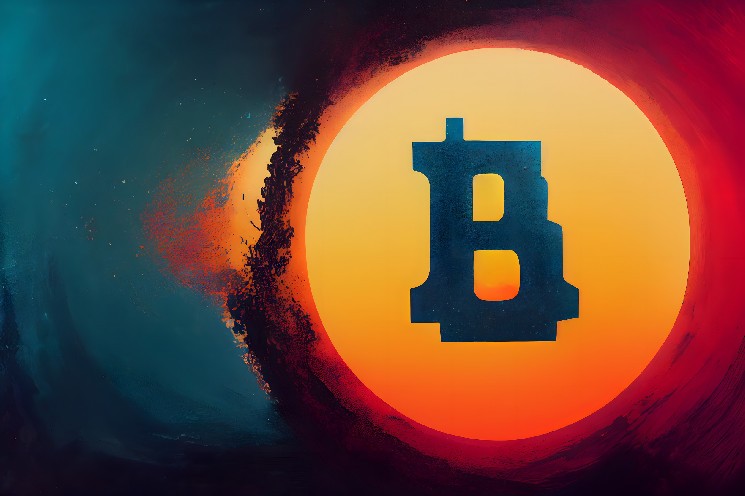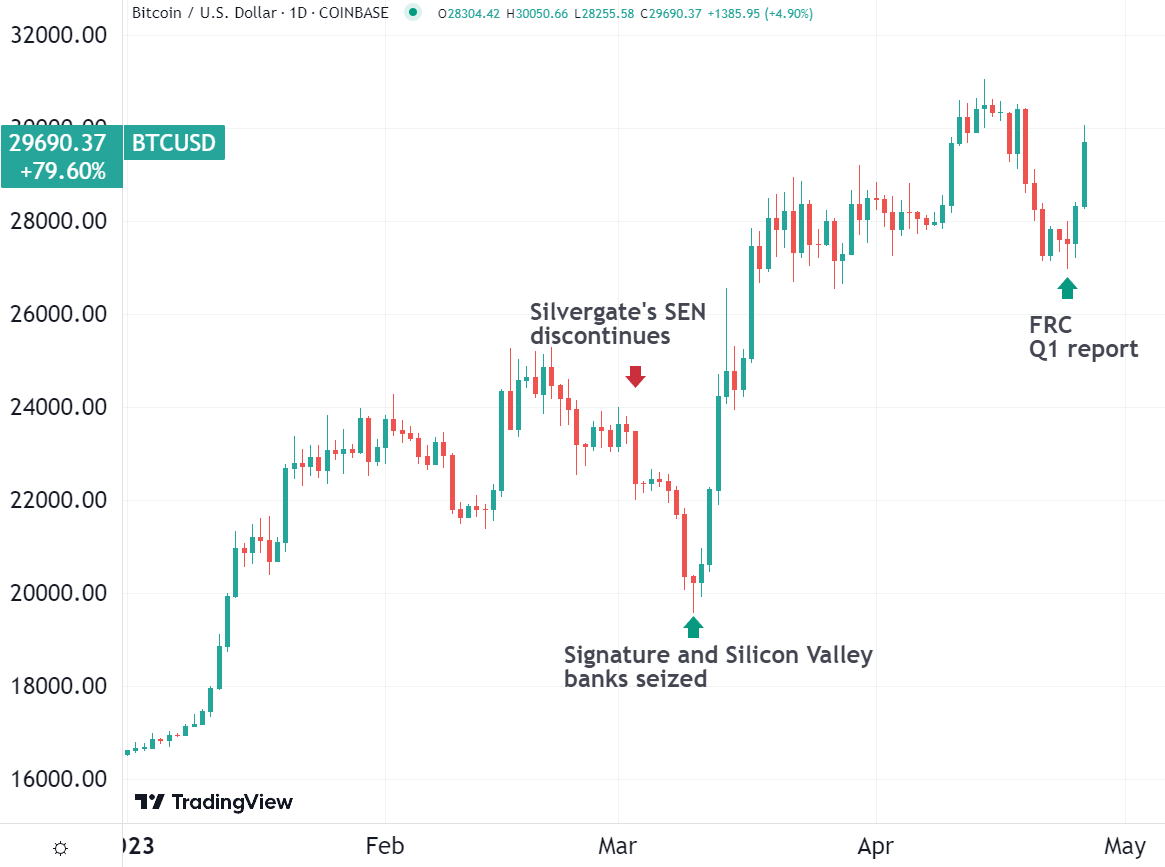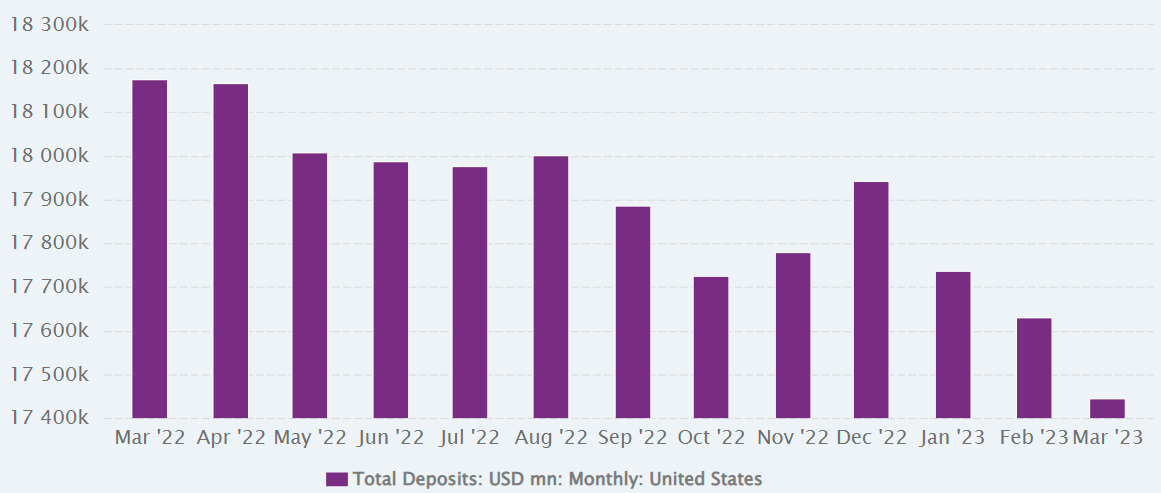Bitcoin Up 79% YTD as Another Banking Crisis Looms

For a long time after Bitcoin launched, it was commonplace to say that Bitcoin is a hedge against inflation. After much adoption and maturity, this thesis was tested in 2022 when the Federal Reserve began its fastest hiking cycle in 40 years to curb an equally historical inflation rate. Bitcoin’s price hit $30,000 today as another US bank seems to inch closer to collapse.
Bitcoin Gains from Banking Woes
As the Fed increased its M2 money supply by 39% from 2020 to 2022, all crypto assets were beneficiaries. The historic surge in liquidity ballooned both stocks and cryptos, with the latter nearing the $3 trillion market cap milestone in November 2021. This was when Bitcoin’s price hit an all-time high at $67.5k.
However, as the Fed began to undo the damage it caused, inflation, it was all downhill from there for Bitcoin. As quantitative easing (QE) turned into quantitative tightening (QT), the dollar strengthened, and the Bitcoin price waned. This was exacerbated when the central bank popped the balloons of big crypto players, from Terra and Celsius to 3AC and FTX.
But as the hiking cycle nears its end and the Fed shakes the legs of more fragile commercial banks, Bitcoin is thriving again.

Of the three banks, Silvergate’s downfall, as provider of fiat-to-crypto rails for exchanges, was the only one exerting negative pressure on Bitcoin price. Image credit: Trading View
From this dynamic, Bitcoin is not so much a hedge against inflation as initially speculated. More precisely, it is now more evident that Bitcoin is primarily a hedge against currency debasement. On a broader scale, it is a hedge against the more considerable instability caused by central banking via its fractional reserve system, wherein banks only hold a fraction of customers’ deposits.
This starkly contrasts the entire concept of Bitcoin, which offers decentralized self-custody of a limited coin supply that cannot be printed at will.
First Republic Bank: the Latest Domino to Fall?
First Republic Bank (FRC) issued its Q1 earnings report on Monday. Year-over-year, the bank’s total deposits shrunk from $176.4 billion to $104.4 billion, higher than expected. When the $30 billion emergency injection from large banks is excluded, that translates to a $102 billion deposit drain.
Only 52% of those deposits were insured. More importantly, FRC has $80.3 billion in short-term debt, with $63.5 billion coming from the Federal Reserve Discount Window. This is a clear sign of financial distress, compounded by lower bank loan yields.

Monthly deposit shrinkage of the US banking sector over one year. Image credit: CEIC Data
Namely, FRC has $103 billion in real estate loans at a 3.18% yield, while its short-term borrowings range from 4% to 5.15% interest rates. The current drain of capital makes the bank’s operating model unsustainable.
According to a CNBC exclusive, the bank’s advisors are trying to inject one more liquidity injection from the big banks. However, as the FRC stock is in a -95% year-to-date freefall, the FDIC will likely seize the bank sooner rather than later.
Banks Are Not Money Warehouses
When it comes down to it, people’s confidence in banking depends on the Federal Reserve. Unfortunately, the central bank tends to destabilize commercial banks in a variety of ways:
- In a hiking cycle, increased borrowing costs reduce banks’ profitability as it increases their debt exposure.
- In a hiking cycle, increased borrowing costs also increase loan defaults, leading to losses for commercial banks.
- In a hiking cycle, the banks’ net interest margin tightens between borrowing at lower rates and lending at higher rates, with interest paid out on deposits outpacing the interest earned from loans.
- In a hiking cycle, especially as sharp as this one, greater volatility translates to a greater inability to raise capital.
Of course, the hiking cycle itself was tripped by the Fed’s unprecedented liquidity flood. Notably, this string of vulnerabilities is baked into the Fed’s monetary policy. Current Fed Chair, Jerome Powell, said so himself in 2012 when he was serving as a member of the Board of Governors.
“Meanwhile, we look like we are blowing a fixed-income duration bubble right across the credit spectrum that will result in big losses when rates come up down the road. You can almost say that that is our strategy.”
With the banking credit crunch now in play, recession is the most likely scenario.
Another big economic warning signal.⚠️
Conference Board’s «Leading Economic Indicators» (LEI) plunged further into Recession territory in March 2023.
LEI contraction typically leads big layoffs by 12 months.
Suggesting Summer 2023 Unemployment Rate spike. pic.twitter.com/VUQgGm35sb
— Nick Gerli (@nickgerli1) April 23, 2023
On the upside, the recession is inflation’s kryptonite. Likewise, the Fed will enter the rate-cutting cycle to stimulate the economy. In that scenario, Bitcoin only benefits. Considering this macro dynamic, Standard Chartered’s digital division chief, Geoff Kendrick, said on Monday that Bitcoin could reach a new ATH of $100k by the end of 2024.






 Bitcoin
Bitcoin  Ethereum
Ethereum  Tether
Tether  USDC
USDC  TRON
TRON  Dogecoin
Dogecoin  Cardano
Cardano  Bitcoin Cash
Bitcoin Cash  Chainlink
Chainlink  LEO Token
LEO Token  Stellar
Stellar  Monero
Monero  Litecoin
Litecoin  Zcash
Zcash  Hedera
Hedera  Dai
Dai  Cronos
Cronos  OKB
OKB  Tether Gold
Tether Gold  Ethereum Classic
Ethereum Classic  KuCoin
KuCoin  Gate
Gate  Algorand
Algorand  VeChain
VeChain  Cosmos Hub
Cosmos Hub  Dash
Dash  Stacks
Stacks  Tezos
Tezos  TrueUSD
TrueUSD  IOTA
IOTA  Basic Attention
Basic Attention  Decred
Decred  Theta Network
Theta Network  NEO
NEO  Synthetix
Synthetix  Qtum
Qtum  Ravencoin
Ravencoin  0x Protocol
0x Protocol  DigiByte
DigiByte  Nano
Nano  Zilliqa
Zilliqa  Siacoin
Siacoin  Holo
Holo  Numeraire
Numeraire  Waves
Waves  Ontology
Ontology  Enjin Coin
Enjin Coin  Status
Status  Pax Dollar
Pax Dollar  BUSD
BUSD  Hive
Hive  Lisk
Lisk  Steem
Steem  Huobi
Huobi  NEM
NEM  OMG Network
OMG Network  Augur
Augur  Bitcoin Gold
Bitcoin Gold  Ren
Ren